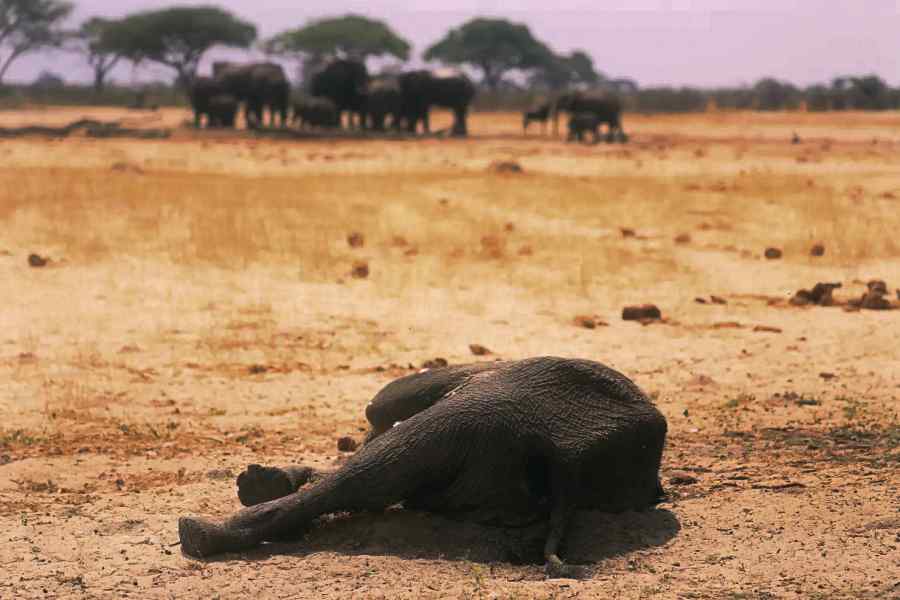Fri 15 November 2024:
The population of both savannah and forest elephant species has declined sharply in the past half a century across the sub-Saharan African region, according to a research report released in Nairobi, the Kenyan capital.
Published by the Proceedings of the National Academy of Sciences, the report, which was released Monday evening, was conducted by two conservation groups, Save the Elephants and Wildlife Conservation Society.
The study analyzed hundreds of population surveys from 475 sites across 37 African countries between 1964 and 2016, focusing on the population dynamics of elephants in their natural habitats.
__________________________________________________________________________

https://whatsapp.com/channel/0029VaAtNxX8fewmiFmN7N22
__________________________________________________________________________
Among key findings, it includes an average decline of 90 percent for the African elephant population, a 70 percent decline for the savannah elephant population and a combined average decline of 77 percent across both species in the continent.
George Wittemyer, the senior author and elephant expert with Save the Elephants, said the study helped pinpoint regions where the population of the iconic land mammals increased and successful conservation efforts.
“We must develop and implement a portfolio of effective solutions to address the diverse challenges elephants face across Africa,” Wittemyer said.
According to the study, the trends of the elephant population in the continent varied significantly. While some populations disappeared entirely, others recorded a dramatic growth.
In southern Africa, the savannah elephant population saw an average increase of 42 percent, while only 10 percent of surveyed populations in eastern Africa showed growth. In contrast, northern savannahs recorded no population growth, with many elephant groups becoming extinct. These trends underline the severe threats facing these land mammals, including poaching, habitat loss and climate-related stresses.
Boo Maisels, a conservation scientist at the Wildlife Conservation Society and a contributing author of the study, said that if well protected and managed, the African elephants can still thrive in their natural habitats despite the myriad threats they face.
Africa’s elephant population has faced a dramatic decline due to poaching, habitat loss, and human-wildlife conflict. In the 20th century, millions of elephants roamed the continent, but today, fewer than 415,000 remain. The primary driver is poaching for ivory, fueled by global demand, especially in Asia. Despite international bans, illegal ivory trade persists, decimating populations in regions like Central Africa.
Habitat loss from agriculture, infrastructure development, and deforestation further threatens elephants. Shrinking habitats force elephants into closer contact with humans, leading to conflicts that often end fatally for the animals. Climate change exacerbates the issue, reducing water and food availability.
Conservation efforts, including anti-poaching patrols, stricter wildlife laws, and eco-tourism, have seen success in countries like Botswana and Kenya. However, protecting Africa’s elephants requires sustained global cooperation to combat poaching, preserve habitats, and promote coexistence between humans and wildlife.
SOURCE: INDEPENDENT PRESS AND NEWS AGENCIES
__________________________________________________________________________
FOLLOW INDEPENDENT PRESS:
WhatsApp CHANNEL
https://whatsapp.com/channel/0029VaAtNxX8fewmiFmN7N22
![]()
TWITTER (CLICK HERE)
https://twitter.com/IpIndependent
FACEBOOK (CLICK HERE)
https://web.facebook.com/ipindependent
YOUTUBE (CLICK HERE)
https://www.youtube.com/@ipindependent
Think your friends would be interested? Share this story!





